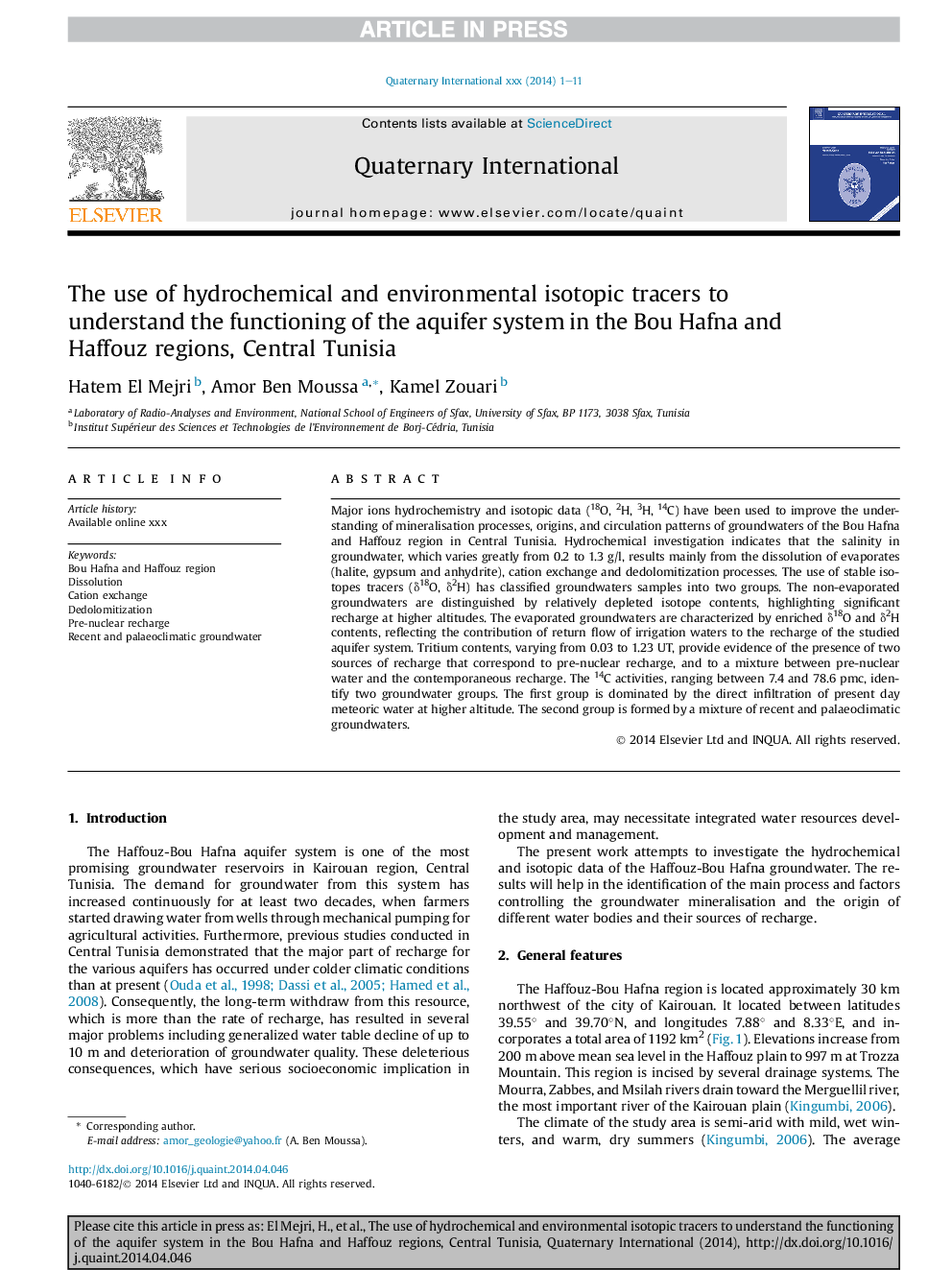| Article ID | Journal | Published Year | Pages | File Type |
|---|---|---|---|---|
| 7452343 | Quaternary International | 2014 | 11 Pages |
Abstract
Major ions hydrochemistry and isotopic data (18O, 2H, 3H, 14C) have been used to improve the understanding of mineralisation processes, origins, and circulation patterns of groundwaters of the Bou Hafna and Haffouz region in Central Tunisia. Hydrochemical investigation indicates that the salinity in groundwater, which varies greatly from 0.2 to 1.3 g/l, results mainly from the dissolution of evaporates (halite, gypsum and anhydrite), cation exchange and dedolomitization processes. The use of stable isotopes tracers (δ18O, δ2H) has classified groundwaters samples into two groups. The non-evaporated groundwaters are distinguished by relatively depleted isotope contents, highlighting significant recharge at higher altitudes. The evaporated groundwaters are characterized by enriched δ18O and δ2H contents, reflecting the contribution of return flow of irrigation waters to the recharge of the studied aquifer system. Tritium contents, varying from 0.03 to 1.23 UT, provide evidence of the presence of two sources of recharge that correspond to pre-nuclear recharge, and to a mixture between pre-nuclear water and the contemporaneous recharge. The 14C activities, ranging between 7.4 and 78.6 pmc, identify two groundwater groups. The first group is dominated by the direct infiltration of present day meteoric water at higher altitude. The second group is formed by a mixture of recent and palaeoclimatic groundwaters.
Related Topics
Physical Sciences and Engineering
Earth and Planetary Sciences
Geology
Authors
Hatem El Mejri, Amor Ben Moussa, Kamel Zouari,
